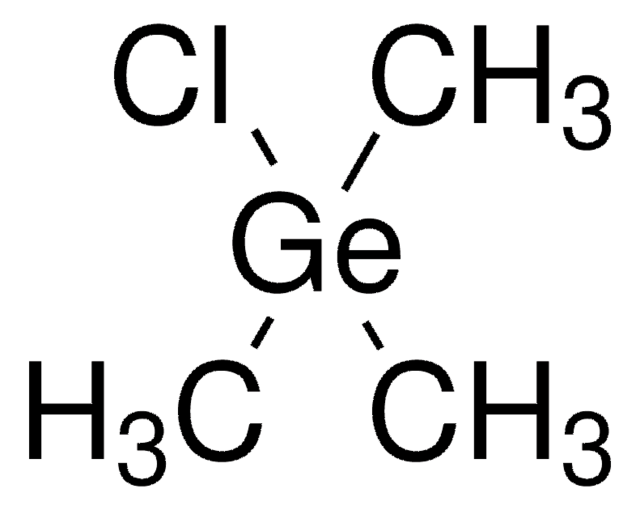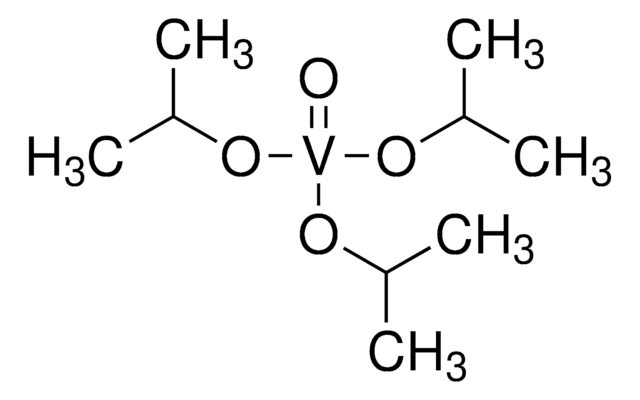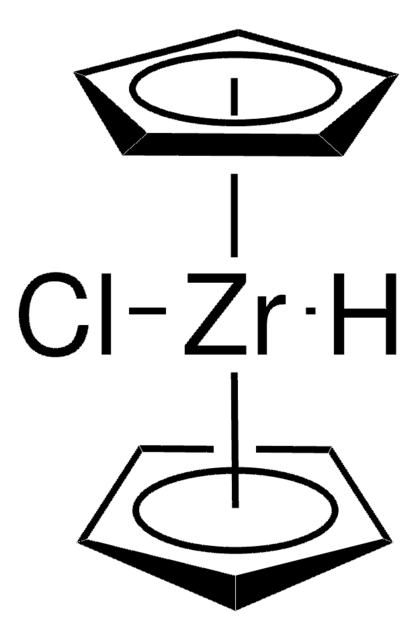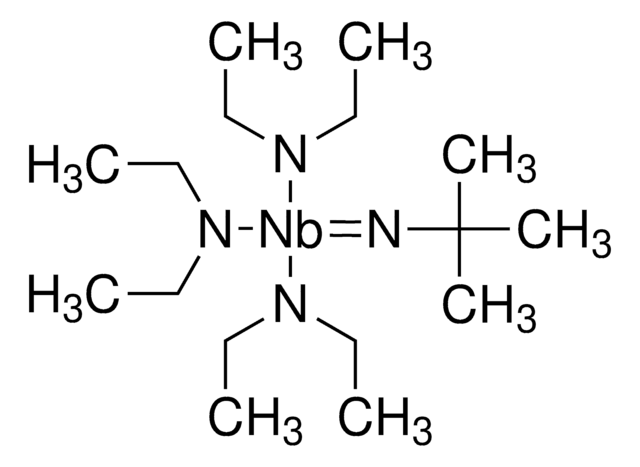396265
Bis(2-carboxyethylgermanium(IV) sesquioxide)
99%
Sinónimos:
GE 132
Iniciar sesiónpara Ver la Fijación de precios por contrato y de la organización
About This Item
Fórmula lineal:
O[Ge(=O)CH2CH2CO2H]2
Número de CAS:
Peso molecular:
339.42
Número CE:
Número MDL:
Código UNSPSC:
12352103
ID de la sustancia en PubChem:
NACRES:
NA.22
Productos recomendados
Ensayo
99%
Formulario
solid
grupo funcional
carboxylic acid
cadena SMILES
OC(=O)CC[Ge](=O)O[Ge](=O)CCC(O)=O
InChI
1S/C6H10Ge2O7/c9-5(10)1-3-7(13)15-8(14)4-2-6(11)12/h1-4H2,(H,9,10)(H,11,12)
Clave InChI
XEABSBMNTNXEJM-UHFFFAOYSA-N
¿Está buscando productos similares? Visita Guía de comparación de productos
Descripción general
Bis(2-carboxyethylgermanium(IV) sesquioxide), also known as repagermanium, is a water-soluble organogermanium compound that exhibits immunostimulatory properties. It is also used as an ingredient in food and cosmetics.
Aplicación
Bis(2-carboxyethylgermanium(IV) sesquioxide) can be used as a precursor in the preparation of photoluminescent carbon dots, applicable as fluorescent probes in bioimaging applications.
Código de clase de almacenamiento
11 - Combustible Solids
Clase de riesgo para el agua (WGK)
WGK 2
Punto de inflamabilidad (°F)
Not applicable
Punto de inflamabilidad (°C)
Not applicable
Equipo de protección personal
Eyeshields, Gloves, type N95 (US)
Elija entre una de las versiones más recientes:
¿Ya tiene este producto?
Encuentre la documentación para los productos que ha comprado recientemente en la Biblioteca de documentos.
Yun Huan Yuan et al.
Nanoscale, 7(40), 16841-16847 (2015-09-26)
Carbon dots doped with germanium (GeCDs) were firstly prepared by a new simple 15 min carbonation synthesis route, exhibiting excitation-independent photoluminescence (PL), which could avoid autofluorescence in bioimaging applications. The as-prepared GeCDs have low cell toxicity, good biocompatibility, high intracellular
Yukinori Tamura et al.
Arteriosclerosis, thrombosis, and vascular biology, 28(12), 2195-2201 (2008-09-27)
Recently, adipose tissue inflammation induced by macrophage infiltration through MCP-1/C-C chemokine receptor-2 (CCR2) pathway is considered to play a role in the development of visceral obesity and insulin resistance. In the present study, to further examine the role of CCR2
Petra Mulder et al.
PloS one, 12(1), e0169740-e0169740 (2017-01-12)
Obese patients with chronic inflammation in white adipose tissue (WAT) have an increased risk of developing non-alcoholic steatohepatitis (NASH). The C-C chemokine receptor-2 (CCR2) has a crucial role in the recruitment of immune cells to WAT and liver, thereby promoting
Bonnie J Kaplan et al.
Journal of alternative and complementary medicine (New York, N.Y.), 10(2), 337-344 (2004-05-29)
This paper reviews the history, chemistry, safety, toxicity, and anticancer effects of the organogermanium compound bis (2-carboxyethylgermanium) sesquioxide (CEGS). A companion review follows, discussing the inaccuracies in the scientific record that have prematurely terminated research on clinical uses of CEGS.
Chisato Hirayama et al.
Journal of gastroenterology, 38(6), 525-532 (2003-06-26)
Although antiviral agents have been adopted for the management of chronic hepatitis B, they have only limited efficacy because of the underlying impaired immune status. Propagermanium, a hydrophilic polymer of 3-oxygermyl propionate, has been reported to have potent immune modulatory
Nuestro equipo de científicos tiene experiencia en todas las áreas de investigación: Ciencias de la vida, Ciencia de los materiales, Síntesis química, Cromatografía, Analítica y muchas otras.
Póngase en contacto con el Servicio técnico








